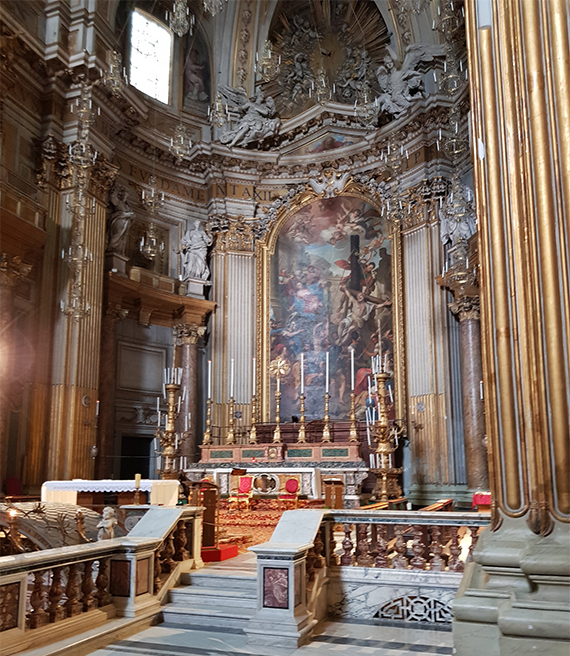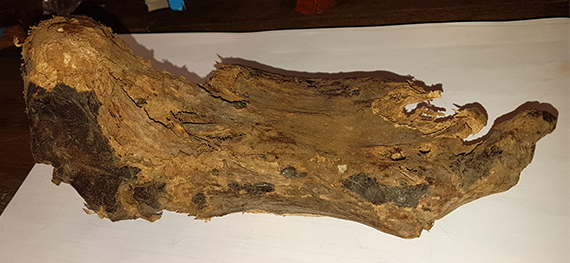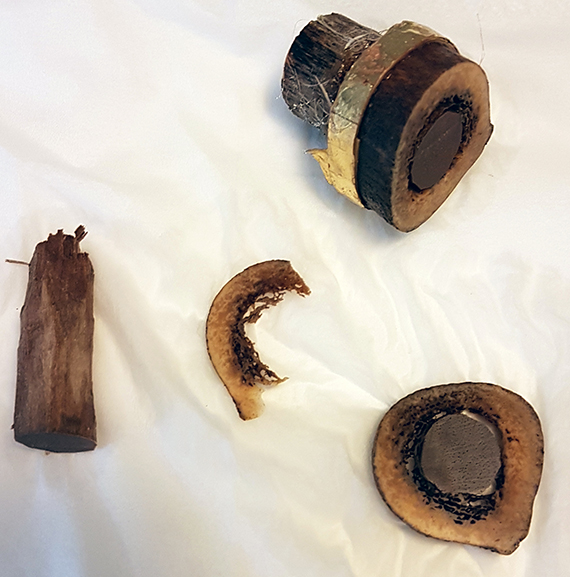
Scientific investigations of the believed remains of two apostles
A Roman church has since the sixth century AD held relics, believed to be the remains of two apostles. Now, they have undergone scientific analysis, casting light on their age and origin.
In Rome lies the Santi Apostoli church, cared for by Franciscan brothers for more than 500 years. For more than 1500 years, this site has held the believed remains of two of the earliest Christians and Jesu apostles: St. Philip and St. James the Younger – relics of the Holy Catholic Church.

Shortly after the churches were erected, remains of worshipped Christian martyrs were moved from their graves to designated worship churches in the towns. This also applied for the remains of the two apostles, St. Philip and St. James. Such movements of remains were called translations.
Shortly after the churches were erected, remains of Christian martyrs were moved from their graves to designated worship churches in the towns. This also applied for the remains of the two apostles, St. Philip and St. James. Such movements of remains were called translations.
A foot, a femur and a tibia
It is unknown who translated the believed remains of St. Philip and St. James and where from, but it is a fact, that they came to glorify the current church of Santi Apostoli in Rome, constructed in their honor. It is also a fact that the remains have been kept in the church since the sixth century.

So, are the relics really the remains of St. James and St. Philip? And what else can we learn from the bones?
The skeletons are today far from complete. Only fragments of a tibia, a femur and a mummified foot remain. The tibia and foot are attributed to St. Philip, the femur to St. James. It appears likely that this has been the case since the sixth century.
Radiocarbon dating

Professor of chemistry and archaeometry, Kaare Lund Rasmussen from University of Southern Denmark has led the scientific investigations of these remains supported by a team consisting of colleagues from University of Groningen in Holland, University of Pisa in Italy, Cranfield Forensic Institute in England, Pontifical Institute of Christian Archaeology in Italy and the National Museum of Denmark.
The results are published in the scientific journal Heritage Science.
The researchers considered the remains of St. Philip too difficult to de-contaminate and radiocarbon date, and their age thus remains unknown so far. But the femur, believed to belong to St. James, underwent several analyses. Most importantly, it was radiocarbon dated to AD 214-340.
”The preserved relic, the femur, is not that of St. James. It originates from an individual some 160-240 years younger than St. James.
– Thus, the preserved relic, the femur, is not that of St. James. It originates from an individual some 160-240 years younger than St. James, explains Professor Kaare Lund Rasmussen, University of Southern Denmark, adding:
– Though the relic is not that of St James, it casts a rare flicker of light on a very early and largely unaccounted for time in the history of early Christianity.
Who that person was, is of course impossible to say.
Searching for martyr corpses
– We consider it very likely, that whoever moved this femur to the Santi Apostoli church, believed it belonged to St. James. They must have taken it from a Christian grave, so it belonged to one of the early Christians, apostle or not, comments Professor Kaare Lund Rasmussen.
The same goes for the believed remains of St. Philip, he adds.
– One can imagine that when the early church authorities were searching for the corpse of the apostle, who had lived hundreds of years earlier, they would look in ancient Christian burial grounds where bodies of holy men might have been put to rest at some earlier time, the researchers write in Heritage Science.
Photo: Kaare Lund Rasmussen.
Moving bones - a popular tradition
- The first known movement of a martyr’s remains to a church is that of St Babylas in AD 354. His remains were transferred from a cemetery in Antioch to Daphne and placed in a church especially built for the purpose by Governor Caesar Gallus
- Immediately after this, translations got popular: the translations of St Timotheus, St Andrew, and St Lukas to Constantinople followed in a year’s time
- At the same time, sources reflect an increasing popularity and circulation of relics from the second part of the 4th century onwards
- Despite the criticism of bishop Athanasius of Alexandria († 373) and Shenoute († 465) at the end of the same century and in the following, relics of martyrs and saints began to be moved into the churches
- Throughout the Roman empire, bodies or body parts were exhumated, transferred, and reburied in the apse in close vicinity of the altar of many important churches.
- Read the research paper 'Investigations of the relics and altar materials relating to the apostles St James and St Philip at the Basilica dei Santi XII Apostoli in Rome'
- The Polar Explorer’s Last Hours
- Danish King got enshrined in his own clothes – but appeared with his brothers’
- Being rich in the Middle Ages led to an unhealthy life
- Renaissance astronomer Tycho Brahe was full of gold
Meet the researcher
Kaare Lund Rasmussen is an expert in archaeometry and professor at Department of Physics, Chemistry and Pharmacy.